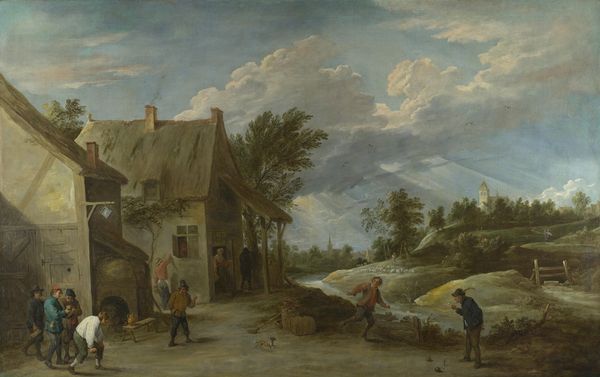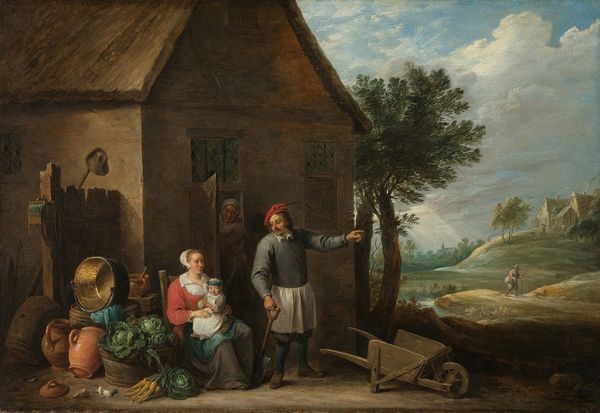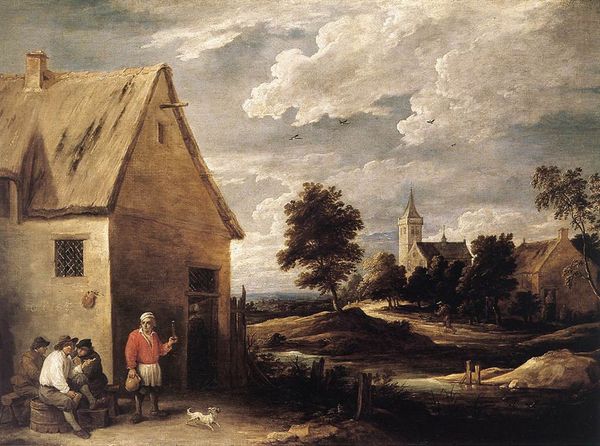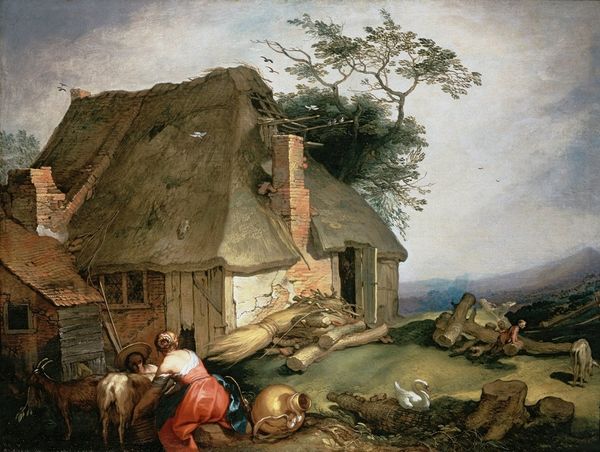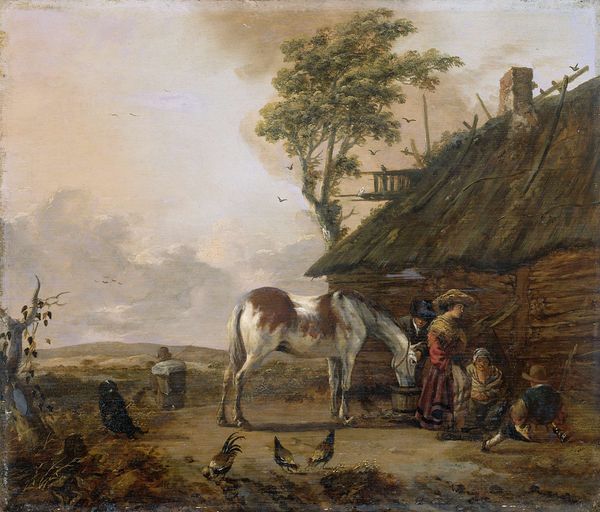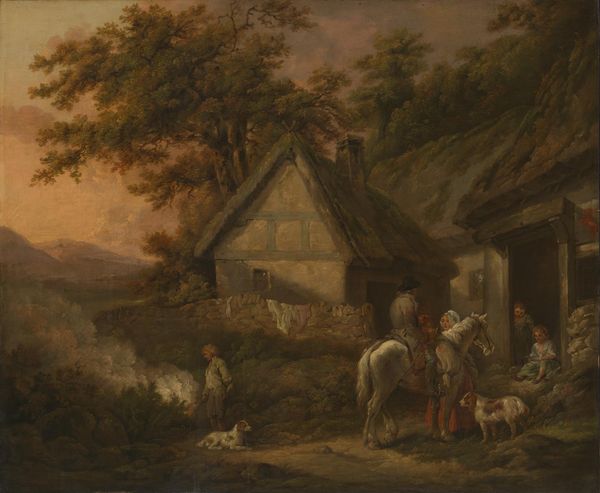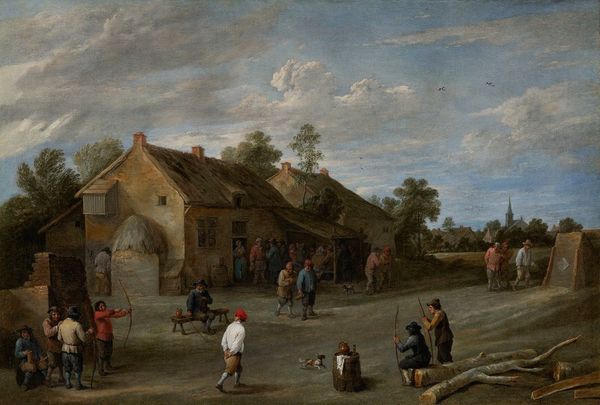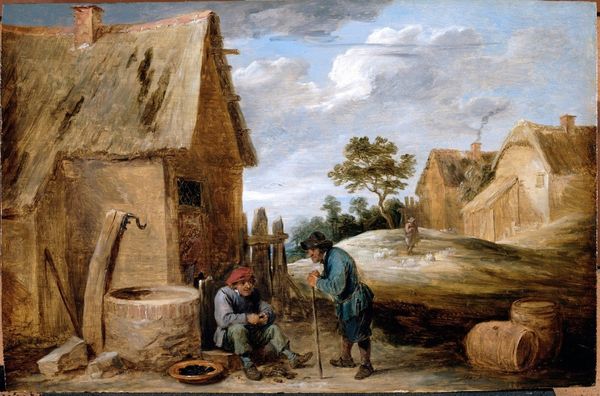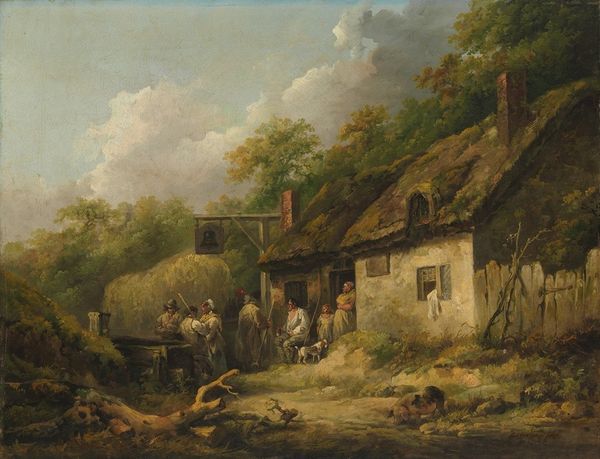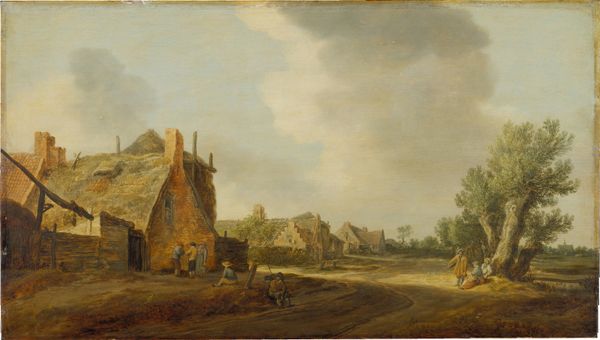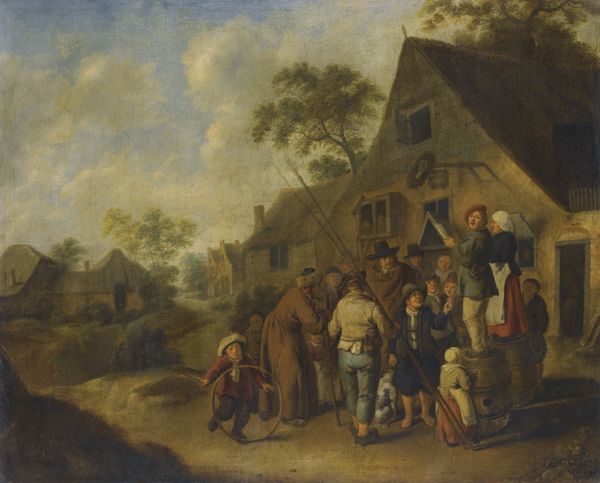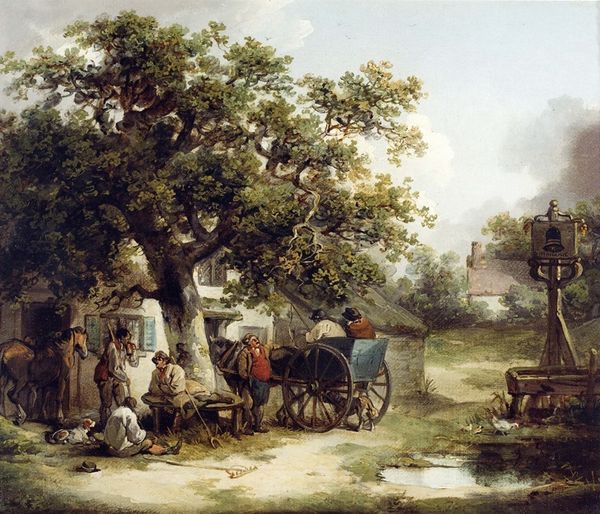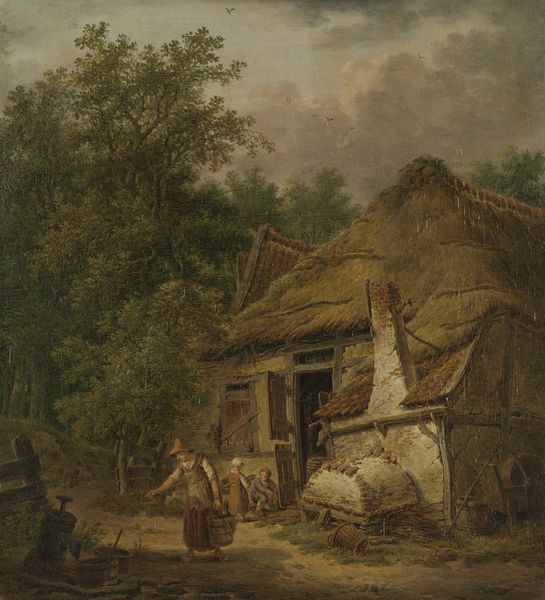
painting, oil-paint
#
baroque
#
dutch-golden-age
#
painting
#
oil-paint
#
landscape
#
figuration
#
oil painting
#
genre-painting
#
realism
Copyright: Public Domain: Artvee
Curator: David Teniers the Younger likely painted "A Riverside Inn" between 1645 and 1650, using oil paint to depict this slice of 17th-century life. Editor: What strikes me first is how perfectly balanced the composition is—a bucolic serenity hangs in the air despite the visible gatherings. The artist uses light and shadow masterfully. Curator: Indeed. Teniers was quite skilled in manipulating light. He positions the inn and figures prominently on the left, drawing our eye initially, then leading us gently towards the bright river landscape on the right. Editor: Look closely, and one notes the meticulous detail—the textures of the thatched roof, the rough-hewn wooden structure, and the very distinct garments on the human figures—these convey texture and status in that moment in history. Curator: Teniers did not idealize the rural settings or the people within them. His style reflects a growing middle-class interest in genre painting, capturing ordinary scenes of everyday life in the Dutch Golden Age. It speaks volumes about emerging cultural values. Editor: From a formalist standpoint, the way the landscape elements function is crucial. The tree almost echoes the building. Note how the vertical lines of the architecture contrast with the horizontal expanse of the river, thereby creating visual rhythm. Curator: Absolutely. The painting is more than just a depiction of an inn. It embodies an era's ethos, social dynamics, and economic structures where leisurely gathering was not only acceptable but clearly captured in such lovely painting. Editor: Considering it as an image then, "A Riverside Inn" creates a feeling of serene order out of, arguably, just daily, commonplace encounters. A lovely work to analyze more and more and more.
Comments
No comments
Be the first to comment and join the conversation on the ultimate creative platform.
